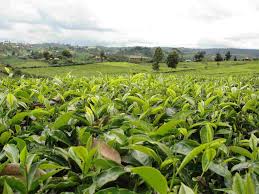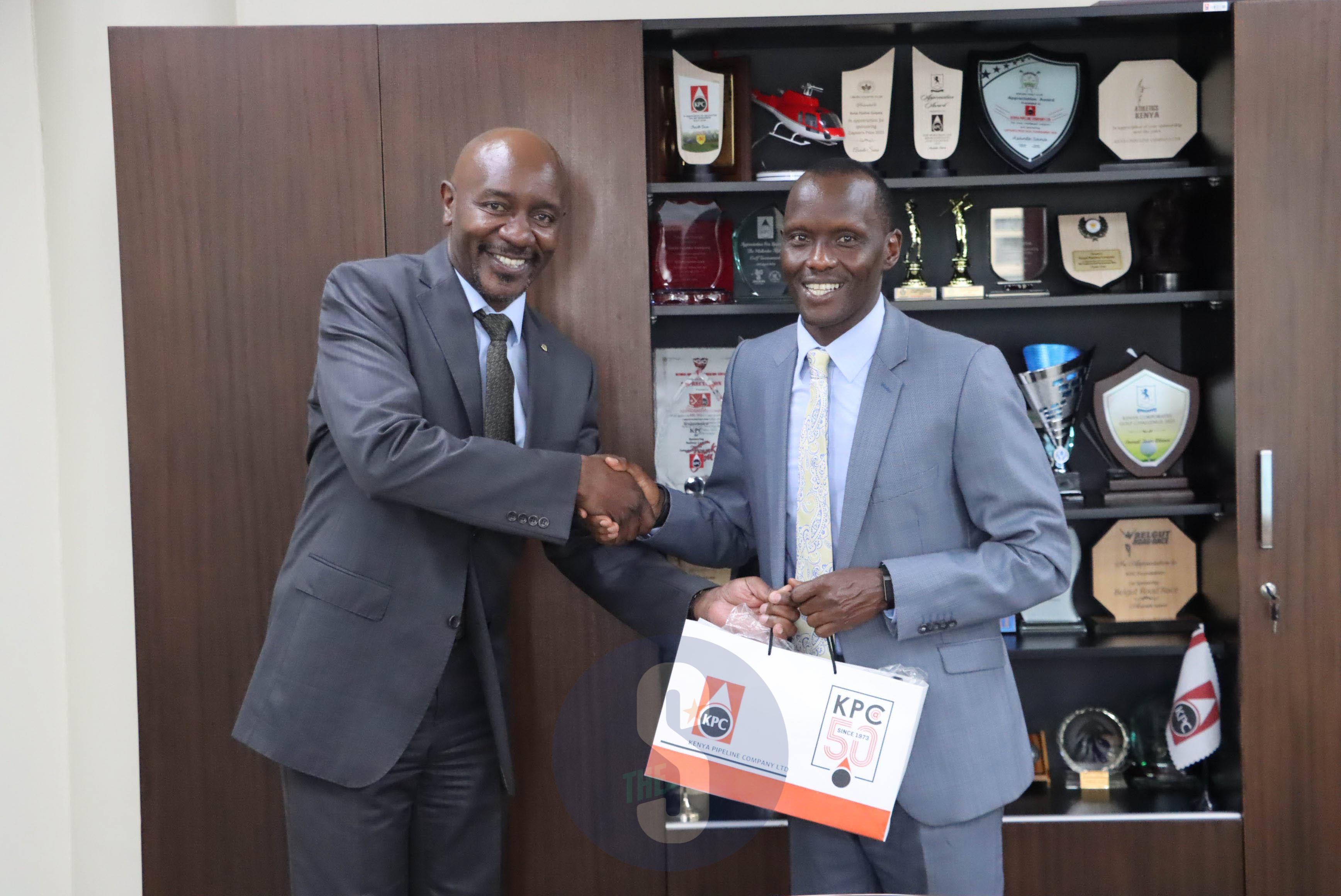
In the rolling green hills of Nyamira county, the air is filled with the whirr of machines and the scent of freshly plucked tea leaves.
At first glance, it’s a scene that has played out for decades.
But behind the familiar façade of the Nyansiongo Tea Factory, a quiet and radical transformation is underway, one that could reshape the future of Kenya’s iconic export.
For decades, Kenya’s tea industry has fuelled the economy, employed more than 700,000 smallholder farmers and generated more than Sh215 billion annually.
But climate change has cast a shadow over the lush plantations. Rising temperatures and erratic rainfall threaten crop yields and livelihoods.
Commissioned in 1974, the 60-year-old Nyansiongo Tea Factory is now blazing a trail in sustainable, low-carbon tea production.
Partnered with its newer satellite, Mate Tea Factory established in 2022, Nyansiongo is leading efforts to green the entire tea value chain, from leaf to cup.
“Our orthodox tea unit at Mate is part of our broader diversification strategy,” Nyansiongo factory manager Daniel Macharia says.
“We’re shifting towards climate-smart operations. That includes embracing new technologies, eco-friendly energy systems, and empowering farmers with sustainable tea varieties.”
Reimagining the boiler room
The centrepiece of Nyansiongo’s low-carbon transformation is its energy system.
Traditionally dependent on firewood, the factory now uses a co-firing process blending 75 per cent firewood, with 25 per cent briquettes made from agricultural waste such as sugarcane bagasse.
“These briquettes are compacted at high pressures and temperatures; they burn cleaner and longer,” Macharia explains.
“While our current boilers were designed for firewood, we're adjusting ratios to maintain efficiency and protect our equipment. Eventually, with new boilers, we aim to switch to 100 per cent briquettes.” That date depends on upgrading boilers to handle all-briquette fuel.
The change isn’t just good for the environment, it also makes business sense.
Co-firing and preventive maintenance help reduce emissions and operational costs.
The factory is also recycling wastewater through a compact wetland system, a natural filtration approach that ensures effluent is treated before re-entering the environment.
This transition is part of a broader national shift. The project, backed by the UN’s FAO and funded by China and Germany, is working closely with the Kenya Tea Development Agency. KTDA manages 71 tea factories across 21 counties and represents nearly 700,000 smallholder farmers.
KTDA Foundation general manager Sudi Mataria says the tea industry is increasingly low carbon due to minimal use of pesticides and widespread climate-smart and regenerative agricultural practices.
“Research shows that if we don't act, productivity will dip by 20
per cent due to climate change. We are already taking action through
solarisation, biomass briquette use, automation of factories, and off-grid
power generation in 17 factories,” he said.
Farming for the future
Macharia says the low-carbon push starts long before the tea reaches the factory gates. Nyansiongo has begun distributing climate-resilient tea clones to smallholder farmers, helping them adapt to unpredictable rainfall and rising temperatures.
Tea clones are specific varieties propagated asexually through cuttings or other vegetative means, ensuring genetic uniformity. Tea grown from seeds has genetic variations. Clones are developed to improve yield, disease resistance, and adaptability to different environments.
“We encourage using smart clones during new plantings or expansions,” Macharia says they even have a nursery within the factory to support this transition to clones.
Nyansiongo works with more than18,000 farmers and handles more than 21 million kilogrammes of green leaf annually. But climate risks from droughts and erratic rainfall threatens their livelihoods.
That’s why Macharia believes sustainability is more than a corporate buzzword, but necessity for survival.
“Corporate social responsibility and climate awareness must go hand in hand,” he says. “If we don’t act now, tea production itself is at risk.”
Matara agrees, saying old tea bushes are becoming less productive and less resilient.
“At KTDA Foundation, we’ve observed many tea bushes currently used are over 60 years old, and unfortunately, they are low yielding. However, through the Tea Research Institute, we now have access to new tea clones tailored to thrive in different ecological zones,” he says.
The real challenge lies in how small-scale farmers can replace their old tea bushes. Replanting means they would lose income for two to three years, which most cannot afford.
“That’s why we are now encouraging farmers to proactively diversify — integrating other income-generating crops or activities to cushion them during the transition.”
The global link
The transition is backed by FAO through the project Global Low Carbon Tea-Triangular Cooperation in Tea Value Chain in Kenya (GLI-TEA Kenya). The shift towards sustainable tea is gaining ground.
“This is a true embodiment of climate-smart agriculture,” says Hamisi Williams, FAO Kenya’s assistant representative for programmes.
“What Nyansiongo and Mate are doing — from co-firing to using climate-smart clones — reflects the project’s goals.”
Funded by China and Germany, the $5 million GLI-TEA Kenya initiative supports Kenya’s tea industry to align with global climate accountability standards.
The project not only reduces greenhouse gas emissions but also promises to open up premium markets for Kenyan tea through low-carbon certification.
“We’re engaging certifying bodies like Rainforest Alliance and Fairtrade,” Williams says. “Low-carbon certification opens access to premium markets and builds trust.”
Consumers now want to know where their tea comes from, how it was
grown, and what footprint it left behind, he says.
FAO’s Williams emphasises that the changes being piloted in Nyamira are part of a much larger strategy to safeguard livelihoods, boost export competitiveness, and meet the growing demands of eco-conscious global markets.
Using blockchain technology, the project will allow tea drinkers in New York or Berlin to trace their cup of black CTC tea back to a certified low-carbon factory in Nyamira — complete with details on the farming methods and energy sources used.
CTC tea is a type
of black tea processed using the "crush, tear, curl" method.
Pathway to prosperity
The shift to low-carbon tea isn’t only environmental — it’s also about the economy and lifting farmers’ income.
KTDA chief executive officer Willy Mutai says certification could raise farm-gate prices from Sh64 to Sh90 per kilo a lifeline for smallholder farmers and rural economies.
“Climate-smart practices are not an option, they are an imperative,” Agriculture PS Kipronoh Ronoh says. The initiative aligns with Kenya’s Climate Change Act, the National Climate Smart Agriculture Strategy, and Tea Industry Policy.
Ronoh also emphasises gender inclusion, saying FAO will hire more women programme in fields and factories.
“With more than 300,000 acres under tea, women involvement isn’t
just fair, it’s strategic,” he says.
Towards a circular economy
The story of Nyansiongo and Mate is also a story of circularity. The briquettes they burn for heat are made from waste products of other industries, turning what would have been discarded into a clean energy source.
“This is the circular economy in action,” Williams says.
“Bagasse from sugar mills, once a disposal problem, now fuels our tea industry. It’s efficient, affordable, and scalable.”
Currently, the 75:25 co-firing ratio is dictated by the limitations of old boilers. But as factories invest in modern equipment, Williams believes Kenya could fully transition away from firewood.
And that’s no small thing. With 71 KTDA-managed factories in the
pilot across 21 counties, scaling up the GLI-TEA model could drastically reduce
deforestation linked to firewood harvesting.
Vision for the next decade
Kenya aims high, seeking to double its annual tea revenue from Sh215 billion to Sh430 billion in the next five to 10 years.
Achieving this will require faster-growing tea varieties, upgraded processing plants, policy support, and full adoption of low-carbon technologies.
“If the enabling environment is sustained through county and national government support, and well-organised cooperatives we can hit that target,” Williams says.
FAO has already signed a $50 million agreement with the Green Climate Fund for continued rollout. Nyamira is among the 14 counties targeted.
Williams cautions against complacency.
“We need to raise awareness. Yes, change can be hard. Some farmers fear short-term losses during transition. But what’s costlier? Adjusting now or losing access to markets in a few years?”
As the morning mist settles over Nyamira’s emerald hills, the rhythmic hum of machines at Nyansiongo and Mate factories offers more than the promise of a warm brew. It signals hope.
Hope for farmers battling climate shocks. Hope for forests spared
the ax. Hope for a tea industry ready to thrive not only in profit, but also in
purpose.
















